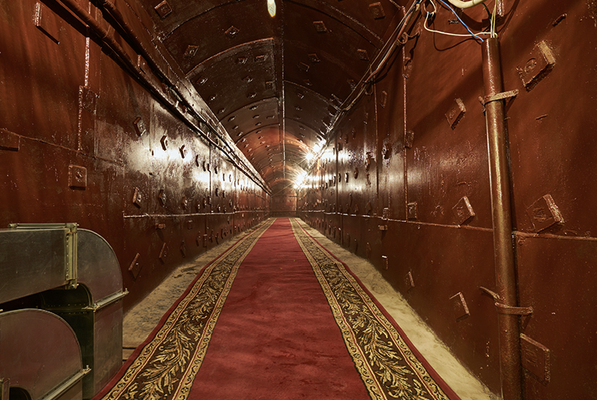About
There's an amazing tunnel system snaking beneath the streets of Moscow, leading to a secret cold war fortress once code named "Bunker-42."
Designed and built after the first series of nuclear tests by the Soviet Union, these tests revealed that the optimum depth for the bunker's silo must be no higher than 165 feet beneath ground in order to survive nuclear fallout intact. The task for the builders was enormous: construct a gigantic structure beneath the city streets without damaging Moscow's existing infrastructure of streets and communication pathways. To do so would alert the public and innumerable unknown spies to the existence of the bunker, thereby rendering the entire (read: top-secret) thing useless.
Strategically located inside a hill in the Tagansky district due to its proximity to the Kremlin, allowing quick access to the bunker for Stalin and the premier tier of government officials within the USSR, Bunker-42 wasn't completed until 1956 and was thankfully never put into use in its full capacity. Rather, it spent the subsequent three decades as an airstrike command base, communicating with aircraft transporting strategic bombers carrying nuclear weapons until the political climate began to shift in 1986.
Today, the space exists as a historical monument that is equal parts museum to what life was like on the Soviet side of the Iron Curtain during the Cold War era and tour of the previously top-secret bunker itself, bringing visitors below ground to a time when the world lived on the constant brink of nuclear annihilation. A variety of tour packages are available at all hours of the day, catering to a range of ages, some of which focus more on the historical aspects of the space, while other take a nearly comic angle on the tangible threat of nuclear annihilation for all humankind.
Related Tags
Know Before You Go
The bunker is only accessible through a scheduled tour. Look for the three-story yellow house with a green gate and red star.
Community Contributors
Added By
Published
November 6, 2015





























